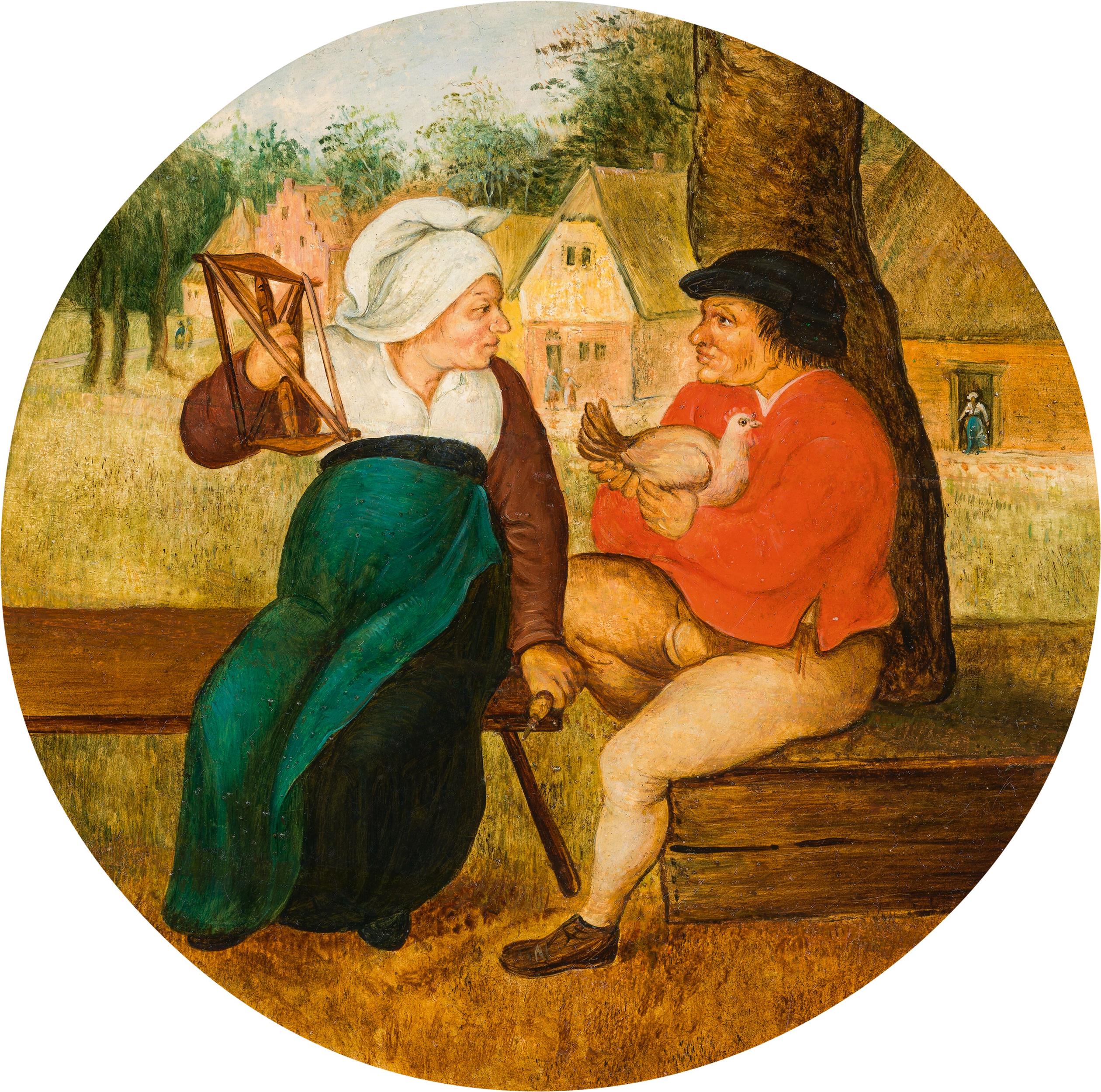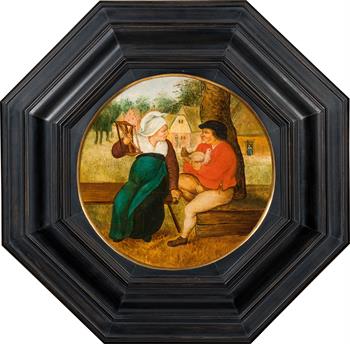2062
„"Das Paar mit Spindel und Henne"“
after 1616
oil on panel, parqueted; framed
21 x 21 cm (tondo)
Provenance
private property, Vienna
Certificate by Dr. Klaus Ertz, Lingen, 2 Mai 2018, is enclosed.
Estimate: € 80.000 - 150.000
Hammer price: € 120.000
Auction is closed.
The present composition can be placed in a group of round wooden panels in which Pieter Brueghel the Younger depicts various interactions between a man and a woman as a couple - often with an erotic connotation. The painting is very close to another round panel in his own hand, which has already been described in detail by Dr. Klaus Ertz in his catalogue raisonné, along with other versions of the subject (cf. Klaus Ertz (ed.), Pieter Brueghel der Jüngere (1564-1637/38). Die Gemälde mit kritischem Oeuvrekatalog, Volume I, Lingen 2000, pp. 179-181).
The added layer of meaning initially becomes apparent through the hen being carried in the arms of the man: a "hen-grabber" is, in proverbial terms, a womaniser; the motif was often depicted in Flemish-Dutch idiom painting and is used in a different form, for example, in Pieter Brueghel the Elder's large collection of proverbs (Gemäldegalerie Berlin, inv. no. 1720).
In the tradition of previous works, Dr. Klaus Ertz connects the depiction of the woman next to him holding spinning tools with themes of virtue and domesticity: "The painter juxtaposes the "hen-grabber" with a domestic ideal in the form of the woman with a distaff and a spindle. Even Pieter the Elder's engraving depicting the "wise and the foolish virgins" sets the domestic work of spinning as a virtuous occupation in contrast with the dance led by the bagpipes, a symbol of folly and sinfulness." (cf. Klaus Ertz 2000, p. 180).
Embedded in a village landscape, the scene between the couple looking at each other reveals itself like an unspoken dialogue: The wife admonishingly raises the distaff in rebuke to the almost guiltily crouched husband, who holds the chicken symbolising infidelity in his arms in front of him. The spindle, which she holds in her left hand in conspicuous proximity to her husband's clearly emphasised private parts, can thus also be understood as an emphatic appeal to his physical fidelity. Thus this small scene, which at first glance seems harmlessly idyllic, reveals astonishingly rich symbolism, with which it embeds itself in the significant representational tradition of proverbs.


